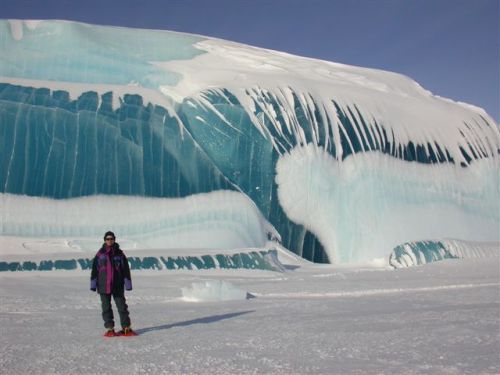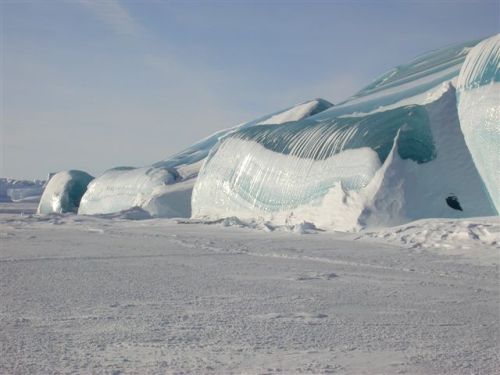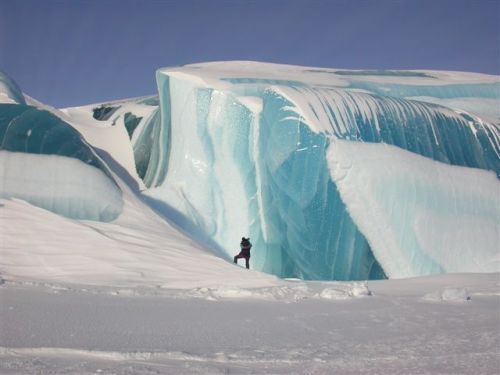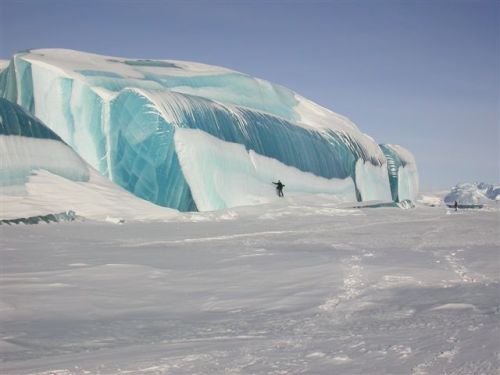From November 21 – December 13, 2009, Travel Dynamics International will follow in the footsteps of Sir Ernest Shackleton, cruising to South Georgia Island, the South Orkneys, Elephant Island (where Shackleton climbed a mountain range following a 700-mile open-boat trip) and the Antarctic Peninsula. For a voyage of this magnitude, celebrating the impossible achievements of one of the world’s greatest explorers, it’s only fitting that a great explorer should accompany us. We have two.
 Peter Hillary made history in 1990 when he and his father, Sir Edmund Hillary, became the first father-and-son team to climb to the summit of Mount Everest. On another expedition, Peter blazed a new overland route to the South Pole. For more than 25 years Peter has challenged some of the most demanding, most dangerous environments on Earth: he is the first man to traverse the 3000-mile length of the Himalayas; he made the first ski descent of Mount Aspiring, known as “the Matterhorn of the Southern Hemisphere;” and he has participated in more than 38 mountaineering expeditions, including ascents of Mount Everest, K2, Makali West Pillar, and Mount Vinson, Antarctica’s highest peak. Peter holds a commercial pilot’s license, is a much-sought-after speaker, and is the author of eight books, most recently In the Ghost Country: A Lifetime Spent on the Edge.
Peter Hillary made history in 1990 when he and his father, Sir Edmund Hillary, became the first father-and-son team to climb to the summit of Mount Everest. On another expedition, Peter blazed a new overland route to the South Pole. For more than 25 years Peter has challenged some of the most demanding, most dangerous environments on Earth: he is the first man to traverse the 3000-mile length of the Himalayas; he made the first ski descent of Mount Aspiring, known as “the Matterhorn of the Southern Hemisphere;” and he has participated in more than 38 mountaineering expeditions, including ascents of Mount Everest, K2, Makali West Pillar, and Mount Vinson, Antarctica’s highest peak. Peter holds a commercial pilot’s license, is a much-sought-after speaker, and is the author of eight books, most recently In the Ghost Country: A Lifetime Spent on the Edge.
 Dave Hahn holds the record for reaching the summit of Mount Everest—ten times (out of 14 tries), more than any other non-Sherpa climber. He has guided climbers to the summit of Mount Rainier 245 times, and led 25 attempts on Denali, reaching the summit 18 times. Dave also holds the world record for the Vinson Massif in Antarctica—he has reached the summit 25 times. In 2006 Dave led a team of professional athletes on an expedition to ski Mount Everest. In 1999 Dave participated in the expedition that recovered and identified the remains of explorer George Mallory, who died trying to scale Everest in 1924. A renowned expert on Ernest Shackleton, Dave has led seven expeditions to South Georgia Island and led trekkers overland on the “Shackleton Traverse,” which in 2004 won Outside magazine’s Trip of the Year Award. Dave shot high-altitude video for the PBS NOVA program Lost on Everest, and led the film crew into the mountains of Antarctica on a journey of discovery that resulted in the Emmy-Award-winning film, Mountains of Ice.
Dave Hahn holds the record for reaching the summit of Mount Everest—ten times (out of 14 tries), more than any other non-Sherpa climber. He has guided climbers to the summit of Mount Rainier 245 times, and led 25 attempts on Denali, reaching the summit 18 times. Dave also holds the world record for the Vinson Massif in Antarctica—he has reached the summit 25 times. In 2006 Dave led a team of professional athletes on an expedition to ski Mount Everest. In 1999 Dave participated in the expedition that recovered and identified the remains of explorer George Mallory, who died trying to scale Everest in 1924. A renowned expert on Ernest Shackleton, Dave has led seven expeditions to South Georgia Island and led trekkers overland on the “Shackleton Traverse,” which in 2004 won Outside magazine’s Trip of the Year Award. Dave shot high-altitude video for the PBS NOVA program Lost on Everest, and led the film crew into the mountains of Antarctica on a journey of discovery that resulted in the Emmy-Award-winning film, Mountains of Ice.
If you book this trip before JULY 9, you’ll receive FREE AIR TRANSPORTATION from Miami to Ushuaia, Argentina, economy class, on LAN Airlines. If you’d like to upgrade to business class, we can arrange that for you for just $2,500 more (availability limited). All guests on this trip will enjoy free limousine transportation from your home to the airport (if you live within 50 miles of your departure airport). Opportunities like this, with such illustrious travel companions, don’t come often, so we encourage you to download the brochure from our main site and give us a call at (800) 257-5767.





 In her book, A Classical Education, Caroline Taggart says the ancient Greek and Roman influence is still alive and well in many aspects of the modern world, from language, architecture and science to art, maths and astronomy. But do you know your Plato from your Pluto?
In her book, A Classical Education, Caroline Taggart says the ancient Greek and Roman influence is still alive and well in many aspects of the modern world, from language, architecture and science to art, maths and astronomy. But do you know your Plato from your Pluto? 



